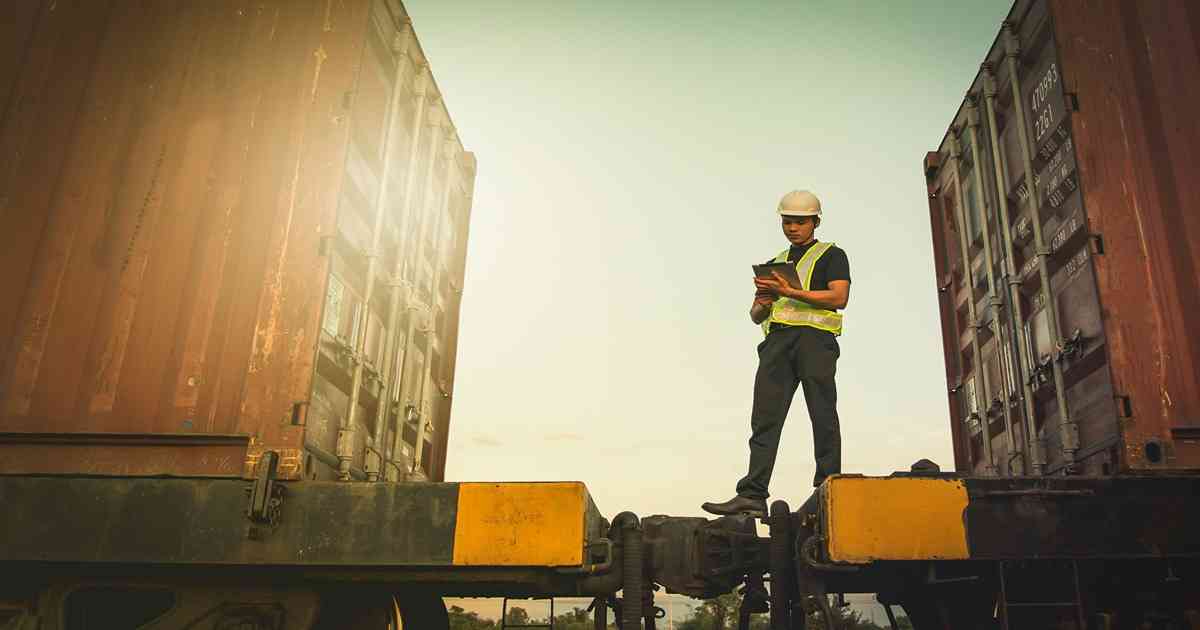
Operations, Transportation
ITS Logistics | December 19, 2023
Jacobs has been selected by Cork County Council as technical advisor for the new M28 motorway linking the N40 South Ring Road to the Port of Cork in Ringaskiddy, in County Cork, Ireland. Jacobs' scope includes consultancy services during the design, construction and closeout phases of the project.
The proposed M28 Cork to Ringaskiddy motorway project is the upgrade of approximately 7.5 miles (12 km) of the N28 National Primary Route to help improve its safety, capacity and accessibility. Forming part of the Core Trans‐European Transport Network, the Transport Infrastructure Ireland-funded scheme will enable the strategic development of the Port of Cork's facilities in Ringaskiddy, while also supporting the economic development of the area locally, regionally and nationally. The motorway is scheduled to be completed by 2030.
"Jacobs brings multi-disciplinary integration and delivery experience from a wide range of critical transportation infrastructure projects in Ireland and globally to support this project," said Jacobs Senior Vice President Kate Kenny. "We're focused on helping Cork County Council deliver an improved, user-centric, sustainable road network that connects communities more effectively, and drives important social and economic benefits in the region."
Cork County Council Chief Executive Valerie O'Sullivan added: "This development forms part of the government's Project Ireland 2040 and will bring both safety and economic benefits. The scheme includes a number of active travel measures with an interface with the Lee to Sea greenway, together with an extension to the existing Ballybrack Valley Pedestrian and Cycle Scheme in Douglas."
Jacobs has more than 1,200 employees in Ireland serving clients in sectors – most notably Advanced Manufacturing, Infrastructure, and Energy & Environment. Projects include the National Transport Authority's BusConnects Dublin program, Irish Rail's East Coast Railway Infrastructure Protection Projects program – the largest coastal protection scheme in North-Western Europe, the WuXi Biologics Drug Substance Manufacturing Facility and Edwards Lifesciences Greenfield Manufacturing Facility.
About Jacobs
At Jacobs, we're challenging today to reinvent tomorrow by solving the world's most critical problems for thriving cities, resilient environments, mission-critical outcomes, operational advancement, scientific discovery and cutting-edge manufacturing, turning abstract ideas into realities that transform the world for good. With approximately $16 billion in annual revenue and a talent force of approximately 60,000, Jacobs provides a full spectrum of professional services including consulting, technical, scientific and project delivery for the government and private sector.
Read More

Supply Chain
PRNewswire | May 16, 2023
Cargobase, the no-nonsense logistics software provider, and GateHouse Maritime, a pioneer in maritime data and analytics, announced the expansion of their successful partnership. As part of the continued collaboration, GateHouse Maritime's powerful tools and insights will be integrated into Cargobase Next, offering enterprise shippers an even more seamless and intuitive supply chain visibility experience.
"Extending our partnership with GateHouse is a natural progression in our mission to simplify logistics for next-gen supply chain professionals. By integrating GateHouse data-driven expertise into our new UI, we're delivering a user-friendly experience that empowers users to make faster and smarter decisions in one seamless platform." - Gert Jan Spriensma, CPO, Cargobase
"We're excited to deepen our collaboration with Cargobase and contribute to their innovative software. Our combined efforts will further revolutionize the way shippers navigate global supply chain complexities." - Morten Orskou Bols, Market Development Director, GateHouse Maritime
Boosting Visibility and Control: Key Advantages of the Enhanced Experience
Real-time vessel tracking Monitor freight with realtime location updates directly from Cargobase's new UI, enabling users to optimize their supply chain and make informed decisions and plan corrective actions.
Advanced analytics Access historical data and predictive analytics through Cargobase's intuitive interface, uncovering trends, identifying potential bottlenecks, and implementing data-driven strategies for elevated shipping performance.
Risk mitigation Stay ahead of potential risks, such as extreme weather or geopolitical events, with timely and accurate information integrated into the new UI, empowering users to proactively address disruptions and maintain smooth operations.
Sustainability initiatives Utilize data within Cargobase's new UI to minimize the environmental impact of shipping operations by optimizing routes, reducing fuel consumption, and promoting eco-friendly shipping practices.
Navigating the Future Together
The collaboration between Cargobase and GateHouse is reshaping the logistics management landscape for enterprise manufacturers. In today's complex and fast-paced global market, mid-to-large-scale manufacturers face unique challenges in managing their supply chains, such as coordinating shipments from multiple suppliers, optimizing routes, and reacting to disruptions.
By integrating data and analytics into Cargobase's new UI, companies can unlock unprecedented supply chain visibility and embrace sustainable shipping practices, addressing these challenges head-on. Real-time tracking, advanced analytics, and risk mitigation features empower enterprise manufacturers to make informed decisions, reduce costs, and improve overall efficiency.
About GateHouse Maritime
Founded in 1992 and headquartered in Aalborg, Denmark, GateHouse Maritime is a leader in ocean visibility solutions. We help global supply chains, offshore industries, authorities, and surveillance companies with transparent and accurate cargo transport status, location data and predictions, sailing schedules, and sales revenues. Our powerful maritime data foundation consists of 300 billion datapoints and 30+ analysis and predictive models used for data-driven decisions by maritime operators worldwide.
Read More

Supply Chain
prnewswire | May 11, 2023
DHL Supply Chain, the world's leading logistics provider, announces the expansion of their partnership with Locus Robotics, the leading provider of autonomous mobile robots (AMRs), increasing its use of Locus AMR robotics within its supply chain operations. As part of this new partnership, DHL Supply Chain will deploy 5,000 Locus Origin AMRs across its global network of warehouses and distribution centers, representing the industry's largest AMR deal to date.
The expanded fleet of Locus AMRs will provide DHL Supply Chain with advanced automation technology to optimize its supply chain operations, and improve worker productivity, order accuracy, speed, and efficiency. The robots will be deployed across DHL Supply Chain's global network, further enhancing its capabilities in e-commerce fulfillment, retail replenishment, and pharmaceutical and healthcare logistics.
"An idea is only a good idea if it can scale," said Oscar de Bok, Chief Executive Officer DHL Supply Chain. "The flexibility and scalability of the Locus solution has been instrumental in helping us meet the evolving demands of the e-commerce landscape and leveraging cutting-edge technology to optimize our operations and deliver an even better experience for our customers."
"The addition of Locus Robotics AMRs to our network is a major milestone in our digitalization journey, and we are excited to partner with Locus Robotics to bring this technology to our operations," said Markus Voss, Global CIO & COO DHL Supply Chain. "By using advanced robotics and data intelligence, we can further improve our operational efficiency, reduce processing time, and continue to improve our customer experience."
"We are thrilled to be working in an expanded capacity with DHL Supply Chain to bring our industry-leading robotics technology to their global network," said Rick Faulk, CEO of Locus Robotics. "As the robotics industry continues to consolidate, Locus Robotics has emerged as the clear leader in the market, and we are poised for further significant growth. Our innovative technology and commitment to customer success have set us apart. With our expanding product offerings and growing customer base, Locus Robotics is well positioned to capitalize on the tremendous opportunities ahead."
DHL has now surpassed more than 250 million units picked using the LocusOne solution across its global sites. The deployment of the new LocusBots is expected to be fully integrated into DHL Supply Chain's operations by the end of the year.
"Locus is helping DHL rapidly transform operations through a workforce empowered with the right technology at the right time, to deliver goods where they need to at the speed our modern markets demand," said Sally Miller, Global Digital Transformation Officer, DHL Supply Chain. "Locus is a critical partner for us as we digitalize our warehouses, distribution and fulfillment centers to efficiently meet increasing order volumes, labor shortages, and rising consumer expectations."
About Locus Robotics
Locus Robotics is a leading provider of autonomous mobile robots (AMRs) for e-commerce, retail, and Locus Robotics is the world leader in revolutionary, enterprise-level, warehouse automation solution, incorporating powerful and intelligent autonomous mobile robots (AMRs) that operate collaboratively with human workers to dramatically improve product movement and productivity 2–3X. Named to the Inc. 500 two years in a row, and winning over 17 industry and technology awards, the Locus solution dramatically increases order fulfillment productivity, lowers operational costs, and improves workplace quality, safety, and ergonomics for workers.
Read More